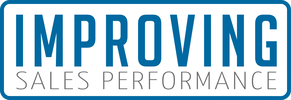|
Audience engagement is an illusive goal for many public speakers. My grandfather once told me that he started every presentation with a joke, to warm up his audience and break the ice. So here we go...
Knock knock. Who's there? Four different types of learners. Four different types of learners who? Are in your audience who came to be engaged, to learn and be inspired. Ok, so you're not rolling on the floor laughing, probably because it's not really funny. But, it is true. Your audience will be filled with all different types of people, and they will all be there for the same reason - to have an experience and to learn. We all learn differently, so it's critical to develop presentations that engage audiences in the various ways humans learn and interact with information. After all, we want our audiences to be engaged and to feel connected. And every human wants to feel understood - especially the presenters! There are four primary learning styles and being aware of each one gives us insight into how to develop presentations that resonate and connect with audiences.
How to Engage Audiences with Different Learning Styles In my presentations, audiences become active participants in learning experiences that create genuine understanding. I combine presentations, worksheets, team interaction and physical props to create unique, memorable and high-impact learning experiences. Let me break this down for you, so that you can use this same framework in your next presentation. First, I believe that most people learn through a combination of learning styles, not solely from one style alone. This is important because I not only want to address each of the four styles to connect with each audience member, but also to reinforce the subject matter by accessing each individual's multi-modal preferences. This gives every audience member a different way to learn and remember each topic. Second, I craft every presentation to have subject matter that can be experienced in each of the four different learning styles. Initially this might sound challenging, but this is how to do it.
Third, enjoy yourself as a presenter. Whenever I am presenting, I want to reach my own personal mindset of where I am having fun sharing my content and interacting with my audience. I want to be fully present with myself, my audience and my content. When I can achieve this state, then I am naturally engaging my audience and achieving my goal of being understood by and connecting with those around me. Comments are closed.
|
Meet Me
Archives
April 2024
Categories
All
|
|
We are headquartered in Colorado with domestic and international teammates and clients. Please use the contact form on this page to inquire about any of our books, podcasts appearances, speaking engagements and workshops, any of our offerings, or simply to connect.
|
© Improving Sales Performance. All Rights Reserved.



 RSS Feed
RSS Feed
